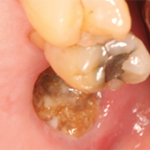NEW YORK (Reuters Health)—Using bisphosphonates for several years is associated with increasing brittleness and decreasing toughness of bone, according to a new review.
“Long-term treatment with bisphosphonates can have negative side effects in some people because of their effects on bone toughness [toughness = the energy that bone tissue can absorb before cracking],” David B. Burr, PhD, of Indiana University School of Medicine, Indianapolis, tells Reuters Health by email. “Therefore, it is best if a patient taking bisphosphonates for five years is checked by a doctor to determine whether they need to continue or should go on a ‘drug holiday.'”
Bisphosphonates have been around for 50 years, but 25 years after their approval for use in humans, their mechanical effects on bone are still not fully understood. In the new report in Bone, Dr. Burr reviews what is known about this topic.1
Treatment with bisphosphonates for one to three years increases bone mineral density (BMD), strength and stiffness of lumbar vertebrae in compression but has little effect on the properties of diaphyseal bone.
Energy required to fracture vertebrae and cortical bone of the ribs declines with treatment duration, which suggests that tissue properties might become impaired.
Over the long term, true fracture mechanics tests suggest cortical bone toughness declines by about 20% or more, despite increased hardness and modulus with bisphosphonates treatment.
More potent bisphosphonates or higher doses of a given bisphosphonate may improve bone structural properties, but they do not have a significantly greater effect on material properties, compared with less potent or lower doses of bisphosphonates.
Studies in dogs suggest that longer duration of treatment with alendronate is associated with greater loss of toughness. But computational models differ about whether elastic modulus, failure stress and hardness begin to decline after a prolonged period of treatment or increase for several years and then plateau.
“Tests of cyclic loading of bone—which is what we do in ‘real life’—shows that bone treated with BPs can fracture with fewer numbers of cycles [a cycle being, for instance, taking a step],” Dr. Burr explains. “So, the bottom line is: Bisphosphonates can reduce risk of fracture by preventing bone loss and maintain bone mass and bone mineral density … However, long-term treatment can lead to impaired properties of the tissue that can have negative side effects in some people.”
“Because duration of treatment is important to mechanical properties, patients need to be monitored after 3–5 years of bisphosphonates treatment,” he says. “Some may not need to be on bisphosphonates more than 3–5 years consecutively. Another implication is that most patients should not be administered bisphosphonates preventatively when they are younger, because over a long duration of treatment this can impair properties of the bone tissue.”

